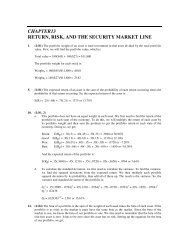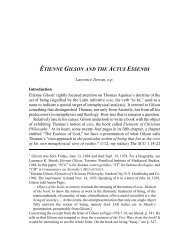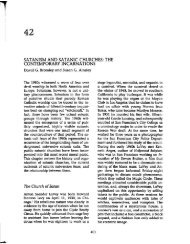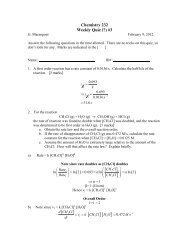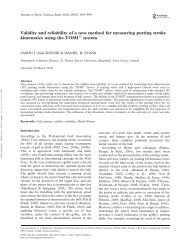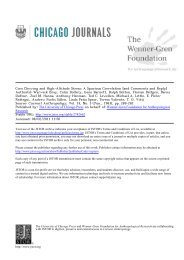MUS 118 Arabic Music Video Sheet - StFX Faculty and Staff Home ...
MUS 118 Arabic Music Video Sheet - StFX Faculty and Staff Home ...
MUS 118 Arabic Music Video Sheet - StFX Faculty and Staff Home ...
You also want an ePaper? Increase the reach of your titles
YUMPU automatically turns print PDFs into web optimized ePapers that Google loves.
Arab <strong>Video</strong> Tapes (16)<br />
common instruments – davul (drum) <strong>and</strong> zurna (double reed instrument)<br />
Asiks – troubadours<br />
Turkish Military music – prominently featured trumpets <strong>and</strong> kettle drums<br />
16-1 “Azan” – Turkish call to worship from the minaret of a mosque by a muezzin<br />
(caller)<br />
16-2 “Eski ordu marsi” – military music of the Ottoman Empire. Lyrics espouse valour<br />
<strong>and</strong> military honour. Instruments include the cevgen (staff with bells attached), zurna,<br />
boru (trumpet), nakkare (2 bowl-shaped drums) davul (double headed drum), timpani,<br />
zils (small cymbals)<br />
16-3 Hancer Dance – Turkish dance of the knives - zurna uses circular breathing to<br />
create continuous sound (like bagpipes)<br />
16-4 Gaziantep (Turkey) regional dance – leylim dance<br />
16-5 Black Sea (Turkey) regional dance – horon dance, 7/8 meter, w/ zurna, davul<br />
16-6 Afyon (Turkish) regional dance – hatcem dance – based on aksak meter<br />
(2+2+2+3) Instruments include kasik (spoons) played by dancers. Dancers are<br />
accompanied by darrabuka (drum), kaval (vertical flute), baglama saz ( lute)<br />
16-7 Saz – plucked lute solo by the 5 or 7 string Turkish saz (lute) – saz is often used for<br />
accompanying narrative singing.<br />
16-8 Silifke regional dance (southern Turkey) - kasik spoon dance - depicts yogurt<br />
making<br />
16-9 Asik – troubadour song. An asik is a troubadour.<br />
16-10 Sema – Islamic dances of the whirling dervishes from Mevlevi sect of the Sunni<br />
Muslims. The dance is performed to achieve religious ecstasy, <strong>and</strong> was once<br />
banned by government. Accompanied by accompanied by ney (end blown flute),<br />
rebab (spike fiddle), ud, 60 string kanun (zither), kudum (kettle shaped drum)<br />
Iran<br />
16-11 Santur – “Nagagme-ye Karevan” – santur is a 70 string Iranian dulcimer. This<br />
song is primarily improvised.
Iraq<br />
16-12 Bedouin dance – accompanied by zurna <strong>and</strong> tabl (double-headed drum)<br />
16-13 “Ya Zahrat al-madiyin” – Contemporary Iraqi song. Accompanaied by matbudj<br />
(double-pipe clarinet), naqqara (pair of kettle drums), darabukka (goblet shaped drum),<br />
<strong>and</strong> riqqs (tambourines). Features call-<strong>and</strong>-response with the singer.<br />
Lebanon<br />
16-14 “Ya Qalbi” – Lebanese popular song. Accompanied by contemporary Arab folk<br />
music orchestra, chorus, <strong>and</strong> western instruments.<br />
16-15 Belly dance – originated in Bedouin society. Accompanied by nai (cane flute),<br />
zurna, darabukka, violin, accordion, qanun (plucked zither), <strong>and</strong> duf (frame drum).<br />
Qatar<br />
16-16 Traditional song of the Persian Gulf states – This is khammari (festive dance<br />
style). Style is found throughout the Persian Gulf region <strong>and</strong> characterized by male solo -<br />
female chorus response. Leader directs rhythm <strong>and</strong> tempo with tabl (double-headed<br />
drum).<br />
16-17 Bedouin song <strong>and</strong> dance – women’s song traditionally sung at weddings.<br />
16-18 Mortar pounding song – work song used when pounding oats into flour. Some<br />
call-<strong>and</strong>-response between members of the group.<br />
16-19 Song <strong>and</strong> dance of welcome – dance/song style used to welcome new government<br />
officials (apparently governments changed with great regularity beginning in the 1950s).


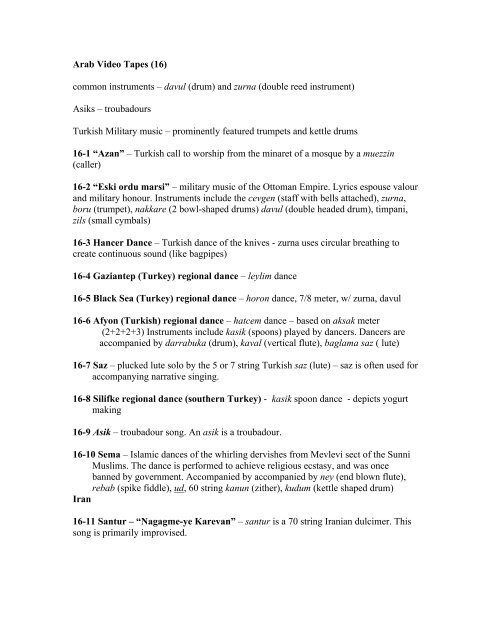
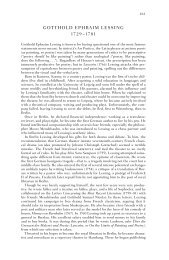
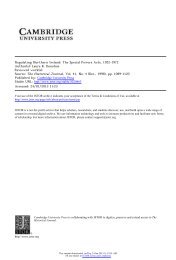


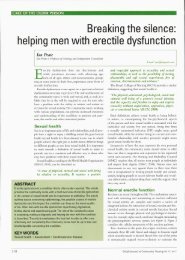
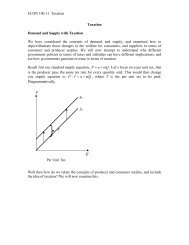
![The Rink - Cyril Dabydeen[1].pdf](https://img.yumpu.com/21946808/1/155x260/the-rink-cyril-dabydeen1pdf.jpg?quality=85)

